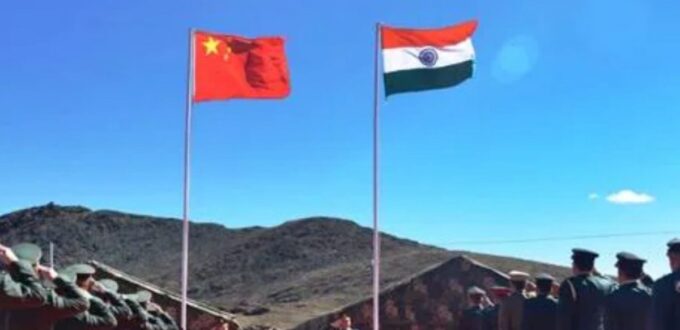In Ladakh, there is now a standoff between the Indian and Chinese troops. There might have been some disengagement here and there, but the Chinese are in no mood to vacate territory claimed by India in the Depsang plains of Ladakh.
Chinese are very particular over their hold in the Siachen area and broad strategic objective ensuring a safe and secure road to the Indian Ocean at Pakistan’s Gwadar that has geopolitical and geoeconomic implications.
Of course, the standoff in the northernmost part of the Line of Control (LAC) in Ladakh has not deterred the Chinese from transgressing it in the central and eastern regions.The LAC is a disputed 3488-kilometer-long de facto border. A face-off in January 2021 along the part between China and India’s Sikkim left troops on both sides injured.
In late August 2021, over 100 Chinese soldiers had transgressed at least five kilometers into Indian territory in Uttarakhand’s Barahoti and damaged infrastructure, including a bridge, before retreating. And in October 2021, Indian and Chinese troops were engaged in a face-off in Tawang after scores of Chinese soldiers crossed over to the Indian side.
However, unlike the clash in Ladakh in 2020, the subsequent ones, including the latest on December 9 in Tawang, have been quickly stabilized by the local commanders of both sides, and there have been no serious injuries or death to their soldiers. Both sides have disengaged from the areas of friction.
As India’s Defense Minister Rajnath Singh told the Parliament on the latest incident, the encounter started when Chinese troops “encroached into Indian territory” and “unilaterally tried to change the status quo” along the disputed border near the Yangtse area.
He said the Indian soldiers responded firmly, prevented the Chinese army from “transgressing into our territory,” and forced them to return to their posts. He added that some soldiers from both sides had been injured in the skirmish, but no Indian soldiers had been “hurt or seriously injured” in the clash.
The Chinese version of the incident is not that detailed. However, the Chinese PLA western theatre command’s spokesperson, Senior Colonel Long Shaohua, claimed that a “routine patrol” by Chinese troops “encountered obstruction from the Indian troops who illegally crossed the LAC. The Chinese troops made a professional, normative and resolute response, bringing the on-site situation under control. Up to now, the Chinese and Indian troops have disengaged.”
China’s Fears
However, Tawang has always been an area of great political significance for China because of its strong historical, cultural, and economic links with Tibet. Tawang hosts Galden Namgey Lhatse, the world’s second-largest monastery of Tibetan Buddhism, the largest being the Potala Palace in Lhasa.Tawang is also the birthplace of the sixth Dalai Lama, who, it is believed, was born in the modest Urgelling Gompa.
China fears that the current and 14th Dalai Lama, with his seat in Dharamshala town in the Indian state of Himachal Pradesh, may ordain his successor outside present-day Tibet, which is under Chinese occupation.If this were to happen, Tawang, with its historical links to Tibetan Buddhism, and the presence of many Tibetan refugees in India, would be the ideal place.
As noted in the EurAsian Times earlier, Beijing claims its jurisdiction over Dalai Lama’s reincarnation, with Chinese scholars saying that “The affairs related to the reincarnation of the 14th Dalai Lama belong to the domestic affairs of Tibetan Buddhism in China, which must respect the wishes of the Chinese Tibetan Buddhist community and the majority of religious believers, and accept the management of the Chinese government.
This contrasts sharply with the Tibetan tradition of the living Dalai Lama, indicating his successor before his death. The 14th Dalai Lama has said: “The authoritarian rulers of the People’s Republic of China, who as communists reject religion, but still involve themselves in religious affairs, have imposed a so-called re-education campaign […] concerning the control and recognition of reincarnations […] This is outrageous and disgraceful. The enforcement of various inappropriate methods for recognizing reincarnations to eradicate our unique Tibetan cultural traditions is damaging and will be difficult to repair.”
He has further added: “Moreover, they say they are waiting for my death and will recognize a 15th Dalai Lama of their choice. It is clear from their recent rules and regulations and subsequent declarations that they have a detailed strategy to deceive Tibetans, followers of the Tibetan Buddhist tradition, and the world community. Therefore, while I remain physically and mentally fit, it seems important that we draw up clear guidelines to recognize the next Dalai Lama, so there is no room for doubt or deception.”


No Comments Yet